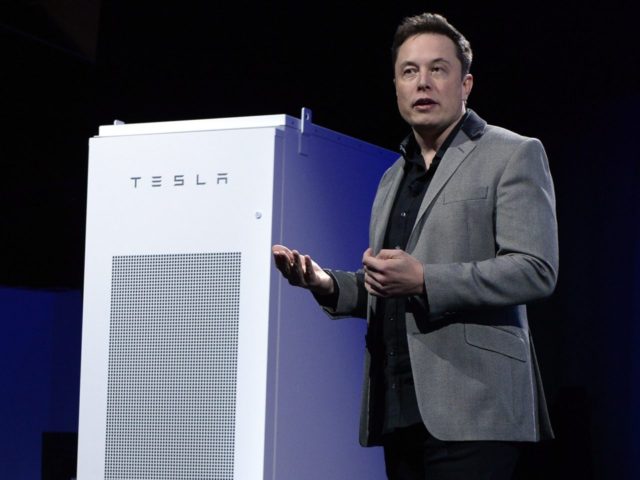Tesla has 100 days to complete delivery and installation in South Australia of the world’s biggest lithium-ion battery storage installation — or forfeit 100 percent of the contract’s payment.
Australia’s Chief Energy Market Operator, Mark Zema, advised in early 2016 that the State of South Australia’s political interference in electrical markets through massively subsidizing wind and solar energy generation to depress the prices paid for electricity generated by so-called carbon-based natural gas and coal plants had succeeded in forcing plant closings. But he warned that by eliminating power redundancy, “in the end the system must collapse.”
With almost 50 percent of capacity in wind and solar power, and temperatures spiking to 106 degrees, South Australia suffered four black-out periods between September and February that caused weeks-long industrial closings and 400,000 homes to be without power. The disaster was blamed on supposedly sustainable wind and solar energy production crashing from a peak of 800 megawatts to under 100 megawatts in four hours.
With the South Australian leftist government in a crisis and desperate for at least 100 megawatts of electrical redundancy, Elon Musk and the head of Tesla’s battery division tweeted billionaire founder of Australia’s Atlassian software in March, “Tesla will get the system installed and working 100 days from contract signature or it is free.”
South Australia then issued a $418 million bid request for battery backup that enraged the Australian federal government. Despite that friction, the provincial government received 90 responses, then signed a deal with a partnership of Tesla and France’s Neoen on July 6.
The key to the winning bid was the all-or-nothing payment agreement that mandates by October 4, 2017 the partnership will be providing electrical grid load-balancing and a fully-functioning 100-megawatt Tesla PowerPack 2.0 battery farm with up to 129 megawatt-hours of energy generation, according to Gizmodo Australia.
Tesla claims that it has increased the efficacy of its battery packs through improvements in its cooling system, and advances in electronics in the last two years that allow the company to install 100-kilowatt P100D packs with 56 extra battery cells in the same Model S and Model X chassis as their standard 90-kilowatt P90D.
The Tesla PowerPack 2.0 storage system contains the equivalent of 2 P100D battery packs. That means the South Australia storage farm will be installing about 650 PowerPack 2.0 towers, or the equivalent of 1,300 P100D.
Tesla claims that there will be no PowerPack 2.0 delivery risk, because South Australia’s incremental demand is only about the equivalent of five-days’ of Model S and Model X production batteries manufactured at its $5 billion Gigafactory outside Reno, Nevada.
But as Breitbart News recently reported, Tesla deliveries have been slowing, year-on-year.
Musk told the Wall Street Journal on July 3 that Tesla deliveries missed production targets for the quarter because it was suffering “severe” production shortfall of high-capacity 100 kilowatt battery packs. Musk warned, “The technology challenge grows exponentially with energy density.” Tesla claims it has solved the P100D production problems, but it has not distributed any data to back up the claim.
Tesla has not disclosed how much it will be at risk for the South Australia PowerPack “all-or-none” payment, but it could be up to $100 million.

COMMENTS
Please let us know if you're having issues with commenting.